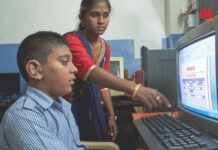PERSPECTIVES ON DISTANCE EDUCATION
Educational Media in Asia Usha V. Reddi and Sanjaya Mishra, Editors
This is the first book to survey the region’s use of educational media and summarise the experiences of different Commonwealth Asian countries in one collection. The book is designed to serve as both a resource and a guide. It provides valuable background and the insights of leading academics, practitioners, researchers and students of educational media – while also offering a unique platform from which, it is hoped, new ideas and further developments will be stimulated. The book is available online at http:// www.col.org/PSedmediaasia/ EdMedia_Asia.pdf
Educational media have the potential to transform the process of teaching and learning. Media have been effective in enhancing the scale and scope of earning, which in turn has made it possible to achieve other social and economic development goals. The requirement of media is so immediate and pressing that the nature of acquisition of knowledge has already exhibited a transformation from what it was only a decade ago in the Asian societies. Schools vie with each other to introduce computer awareness courses and even computer-based learning in established conventional courses. Software development in this area is an important priority of computer firms. Secondary
schools adopt a computer-based curriculum, traditional humanities and social science programmes rush to computer applications programmes. The Commonwealth of Learning (COL) has tried to share this Asian experience by ocumenting such developments. Asia, the home to most of the world’s big universities, open universities with over 100,000 students, generates the hope that much can be learned, from the way that these institutions deploy a variety of educational media that include radio, television, teleconferencing, interactive radio, multimedia and the Web. Educational media researchers, practitioners and policy-makers carried the similar hope through their contributions to the volume on educational media in Asia as part of the series: Perspectives on Distance Education. Commonwealth Asia has been a region of extremes. At one end are the leaders like Malaysia, Singapore and India that have successfully exploited the technology for the purposes of education. At the other end are countries such as Bangladesh and Sri Lanka which are still at the nascent stage of deploying technologies for education and development. The book has three sections: Country Profiles, Research Reviews and Case Studies. The five country studies, three research reviews and six cases resented in the book highlight the richness of the Asian experience. The five country profiles describe the use of educational media in Bangladesh, India, Malaysia, Singapore and Sri Lanka. The research reviews section has documented three main areas of media application: audio, video and computer-related technologies. The final section of case studies present six Asian case studies, which again includes two non- Commonwealth countries. The Commonwealth of Learning enriched the book with contributions from 23 authors in 14 chapters. The profound knowledge and experience of the two editors, Dr. Usha Reddi and Dr. Sanjaya Mishra, in educational media in the sian region has properly been reflected in the rich content of the book. All the authors, in some way have tried to draw attention to the importance of the need for a coherent and cohesive approach. The successful use of ommunication technologies for education requires the optimal deployment of sufficient resources in support of policy, structures, funding, human resources, production, research/evaluation and future planning- one can not deny to these facts while making out a gist of the book.
























